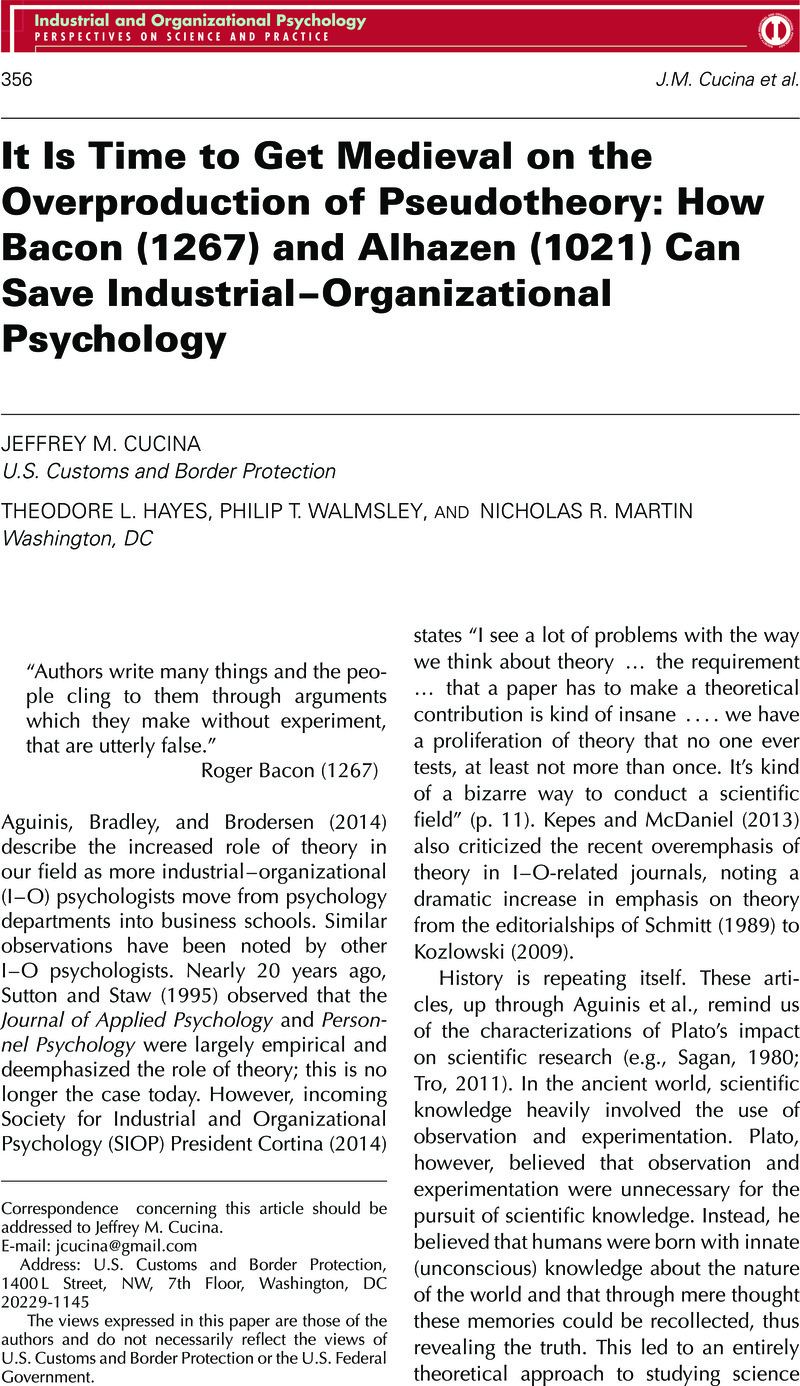Crossref Citations
This article has been cited by the following publications. This list is generated based on data provided by Crossref.
Cucina, Jeffrey M.
and
McDaniel, Michael A.
2016.
Pseudotheory proliferation is damaging the organizational sciences.
Journal of Organizational Behavior,
Vol. 37,
Issue. 8,
p.
1116.
Ashkanasy, Neal M.
2016.
Why we need theory in the organization sciences.
Journal of Organizational Behavior,
Vol. 37,
Issue. 8,
p.
1126.
Zickar, Michael J.
and
Highhouse, Scott
2017.
Where Has All the Psychology Gone? (Twenty Years Later).
Industrial and Organizational Psychology,
Vol. 10,
Issue. 4,
p.
616.
McAbee, Samuel T.
Landis, Ronald S.
and
Burke, Maura I.
2017.
Inductive reasoning: The promise of big data.
Human Resource Management Review,
Vol. 27,
Issue. 2,
p.
277.
Highhouse, Scott
Zickar, Michael J.
and
Melick, Sarah R.
2020.
Prestige and relevance of the scholarly journals: Impressions of SIOP members.
Industrial and Organizational Psychology,
Vol. 13,
Issue. 3,
p.
273.
Cronin, Matthew A.
Stouten, Jeroen
and
van Knippenberg, Daan
2021.
The Theory Crisis in Management Research: Solving the Right Problem.
Academy of Management Review,
Vol. 46,
Issue. 4,
p.
667.
Aguinis, Herman
and
Cronin, Matthew A.
2022.
It's the Theory, Stupid.
Organizational Psychology Review,
Zahra, Shaker A.
Li, Yong
Agarwal, Rajshree
Barney, Jay B.
Dushnitsky, Gary
Graebner, Melissa
and
Sarasvathy, Saras D.
2022.
Developing Theoretical Insights in Entrepreneurship Research.
SSRN Electronic Journal ,
Auer, Elena M.
Mersy, Gabriel
Marin, Sebastian
Blaik, Jason
and
Landers, Richard N.
2022.
Using machine learning to model trace behavioral data from a game‐based assessment.
International Journal of Selection and Assessment,
Vol. 30,
Issue. 1,
p.
82.
Rupp, Deborah E.
Thornton, George C.
Bisbey, Tiffany M.
Hoover, Anna N.
Salas, Eduardo
and
Murphy, Kevin R.
2024.
An epistemology for assessment and development: How do we know what we know?.
Industrial and Organizational Psychology,
Vol. 17,
Issue. 2,
p.
252.



